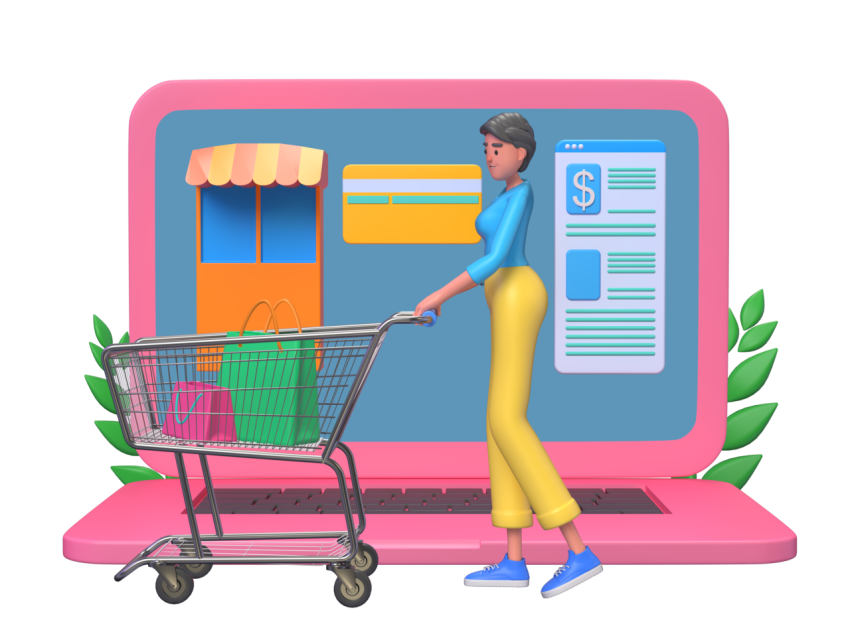Impact of Including New Strategies and Techniques for Online Retailers
Incorporating new technologies in the realm of international e-commerce has revolutionized the way online retailers operate. With the ever-evolving digital landscape, staying ahead of the competition requires embracing innovative strategies and techniques for online retailers. One significant aspect is the impact of including new technologies. By leveraging cutting-edge tools and platforms, online retailers can enhance their customer experience, streamline operations, and drive growth.
The integration of advanced technologies such as artificial intelligence, augmented reality, and blockchain has paved the way for personalized shopping experiences, efficient inventory management, and secure transactions. By harnessing these tools, online retailers can optimize their website performance, offer interactive product visualization, and provide secure payment gateways.

Image credit:https://en.baochinhphu.vn/
Latest Technologies That Have Been Included In E-Commerce
In the ever-evolving landscape of e-commerce, staying up-to-date with the latest technologies is crucial for online retailers. Incorporating these cutting-edge solutions can significantly enhance the customer experience, streamline operations, and drive business growth. Let’s explore some of the latest technologies that have been making waves in the e-commerce industry.
Artificial Intelligence
AI has emerged as a game-changing technique for online retailers with its ability to analyze vast amounts of data that enables online retailers to offer personalized product recommendations and automate customer service. AI-powered systems also enhance inventory management, demand forecasting, and fraud detection, leading to improved operational efficiency.
Augmented Reality
AR is revolutionizing the way customers engage with products online. By superimposing digital elements onto the real world, AR allows shoppers to visualize how items will look or fit in their surroundings. This technology has transformed the furniture and fashion industries, enabling virtual try-ons, and room visualizations, and reducing return rates. AR creates immersive and interactive shopping experiences, increasing customer confidence and satisfaction.
Voice Commerce
Made specifically got the e-commerce industry, Voice Commerce is gaining momentum with the rise of voice assistants like Amazon’s Alexa and Google Assistant. By simply using voice commands, customers can now search for products, add items to their carts, and complete purchases. Voice commerce offers a hands-free and convenient shopping experience, allowing users to multitask while making transactions. Retailers need to optimize their websites and applications for voice search and provide personalized recommendations based on customer preferences.
Blockchain technology
Blockchain provides a secure and transparent environment for e-commerce transactions. Its decentralized nature ensures that each transaction is verifiable and tamper-proof, enhancing trust between buyers and sellers. Blockchain is particularly valuable in supply chain management, enabling end-to-end traceability and reducing counterfeiting risks. Smart contracts, powered by blockchain, automate and streamline processes, eliminating intermediaries and improving efficiency.
Internet of Things
Being one of the most prominent techniques in the last decade, IoT devices are transforming the e-commerce landscape. Connected devices can provide real-time inventory updates, monitor shipping and delivery, and enable personalized experiences. For example, smart home devices can automatically reorder consumables when supplies run low, creating a seamless shopping experience. IoT data analytics also offer valuable insights into customer behavior and preferences, enabling retailers to offer targeted promotions and improve customer engagement.
By embracing these latest technologies, online retailers can gain a competitive edge, attract and retain customers, and drive business growth. It is essential to stay informed about emerging trends and strategically adopt technologies that align with the business’s goals and customer needs.
Advantages Of Using The Latest Technologies In Online Retail
In today’s rapidly evolving e-commerce landscape, the latest technologies are making a remarkable impact on online retailers whether you sell clothes or offer trips and other prizes from a lucky draw. As the Strategies and Techniques for Online Retailers evolve, so does the consumer expectation and competition in the digital marketplace.
Better Customer Experience
The first and foremost advantage is the enhancement of customer experience. Implementing the latest technologies in online retail enhances the user experience by offering personalized shopping experiences, easy navigation, and speedy checkouts. The newest Strategies for Online Retailers are focused on using AI and Machine Learning to understand customer preferences and deliver personalized recommendations, which not only increases customer satisfaction but also boosts sales.
Inventory Management
The latest Techniques for Online Retailers involve the use of advanced algorithms and predictive analytics, helping retailers manage their inventory more efficiently. This not only reduces the risk of overstocking or understocking but also saves considerable costs in warehouse management.
Easier Access and Management of Big Data
The latest technologies also enable online retailers to harness the power of data. With big data analytics, retailers can gain valuable insights into customer behavior, trends, and preferences, helping them make data-driven decisions. This translates to effective marketing strategies, better product selection, and ultimately, increased sales and profits.
The latest technologies are reshaping the Strategies and Techniques for Online Retailers. By adopting these technologies, online retailers can enhance customer experience, improve inventory management, and make data-driven decisions to gain a competitive edge in the digital marketplace.

Challenges Faced While Including New Technologies
While the adoption of the latest Strategies and Techniques for Online Retailers, like AI, AR, and IoT, offers a plethora of advantages, it is not without challenges.
One of the most significant challenges in adopting AI in online retail is the lack of technical expertise. AI requires a deep understanding of machine learning algorithms and data science. Therefore, for many retailers, the lack of necessary skill sets to implement and manage AI systems is a significant barrier.
Next, is the challenge of data privacy and security. As IoT devices multiply in the online retail sector, so do the vulnerabilities. The data collected and processed by IoT devices are often sensitive, and a breach could lead to severe consequences. Therefore, maintaining robust data security protocols is a challenge for online retailers employing IoT as a part of their strategy.
The integration of AR into online retail also presents its set of challenges. For one, developing AR applications is a costly endeavor, which may not be feasible for smaller retailers. Furthermore, AR requires high-speed internet for a seamless shopping experience, which is still not available in many parts of the world.
Future Technologies Strategies That Might Be Used In Online Retail
In the ever-evolving landscape of e-commerce, more advanced technologies are set to define future Strategies and Techniques for Online Retailers. Here are some technologies that could significantly impact online retail:
Quantum Computing
Quantum computing, with its ability to process complex calculations rapidly, could dramatically improve inventory management and forecasting, enabling retailers to make more accurate predictions and decisions.
Biometric Technologies
Biometric technologies like fingerprint scanning and facial recognition could offer enhanced security measures in online retail, providing an additional layer of data protection.
Robots and Automation
The use of robotics and automation in online retail can enhance processes like packing, shipping, and handling returns. This not only improves efficiency but also reduces the margin for human error.
Edge Computing
This technology aims to bring computation and data storage closer to the location where it’s needed, improving response times and saving bandwidth. In online retail, it could significantly enhance real-time data processing for better customer experience.
Conclusion
The future of online retail is one of endless possibilities, powered by breakthroughs in technology. The continued evolution of Strategies and Techniques for Online Retailers promises to usher in an era of unprecedented growth and innovation. From Blockchain to IoT to Quantum Computing, these technologies aim to enhance efficiency, security, and most importantly, the customer experience. While the path to adoption may be laden with challenges, the rewards are undeniably worth the effort. Embracing change and staying at the forefront of technological adoption will be the key to success for online retailers in the times to come.

Fahad Author Bio:
Fahad Khan is a Product Manager and digital marketing enthusiast who works at Ubuy Technologies.
Content marketing, PPC, email, and social media marketing are among his areas of expertise. He has
been exploring the field of digital marketing to share his pearls of wisdom with the whole world. He
enjoys working on different niches and creating valuable content for readers.


Pingback: Winning Strategies For The Big Ticket Draw Lottery In The UAE 2023 | Uae Draw Secret.com
Pingback: Best Web Hosting In Dubai | UAE Hosting Provider Companies 2023 | Uae Draw Secret.com
Pingback: The Best Ecommerce Store In UAE 2023: Empowering Your Online Shopping Experience | Uae Draw Secret.com